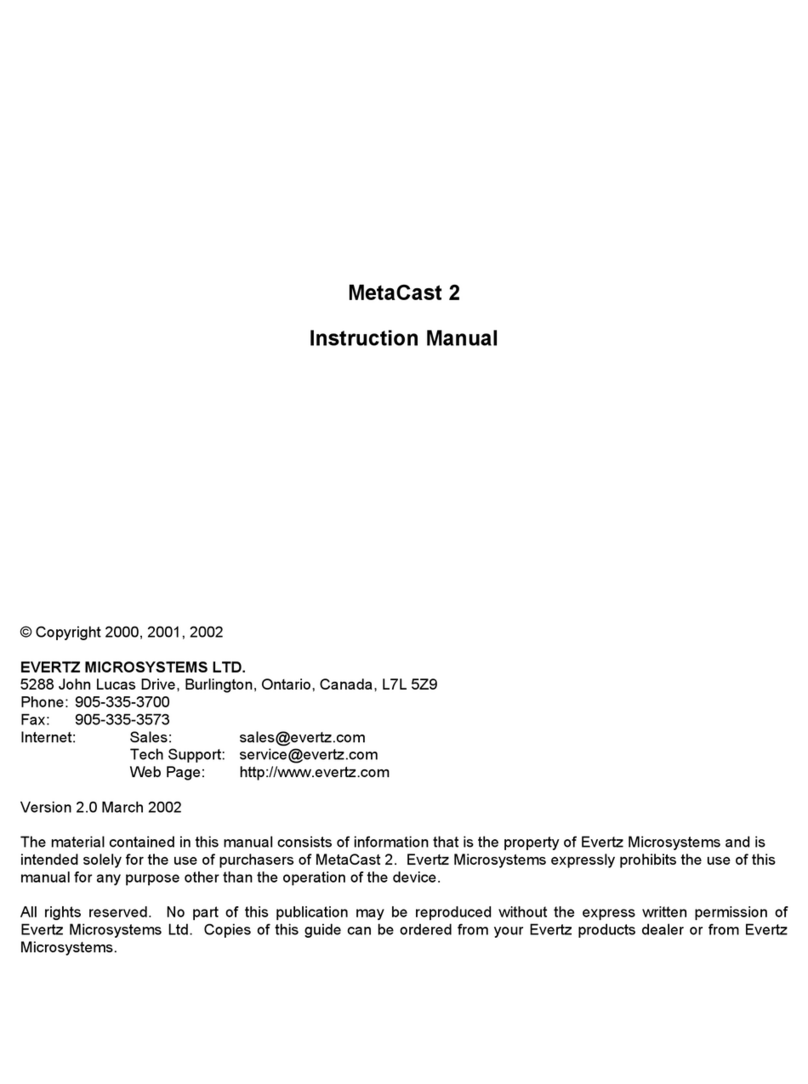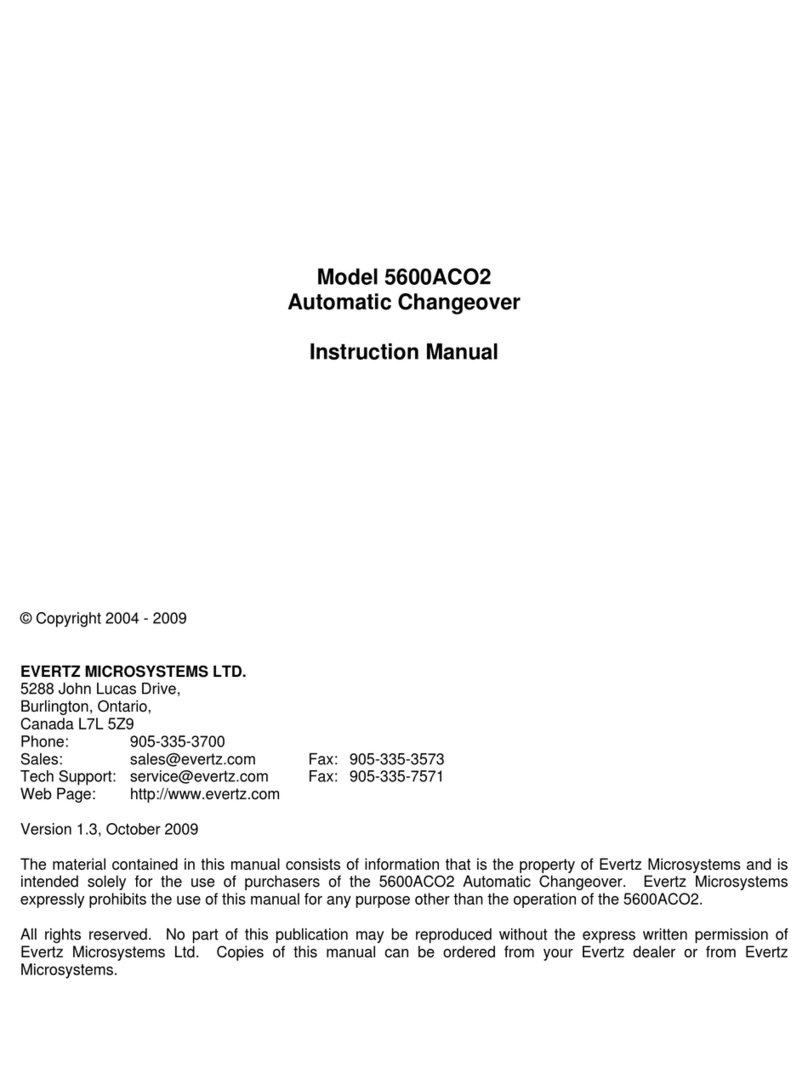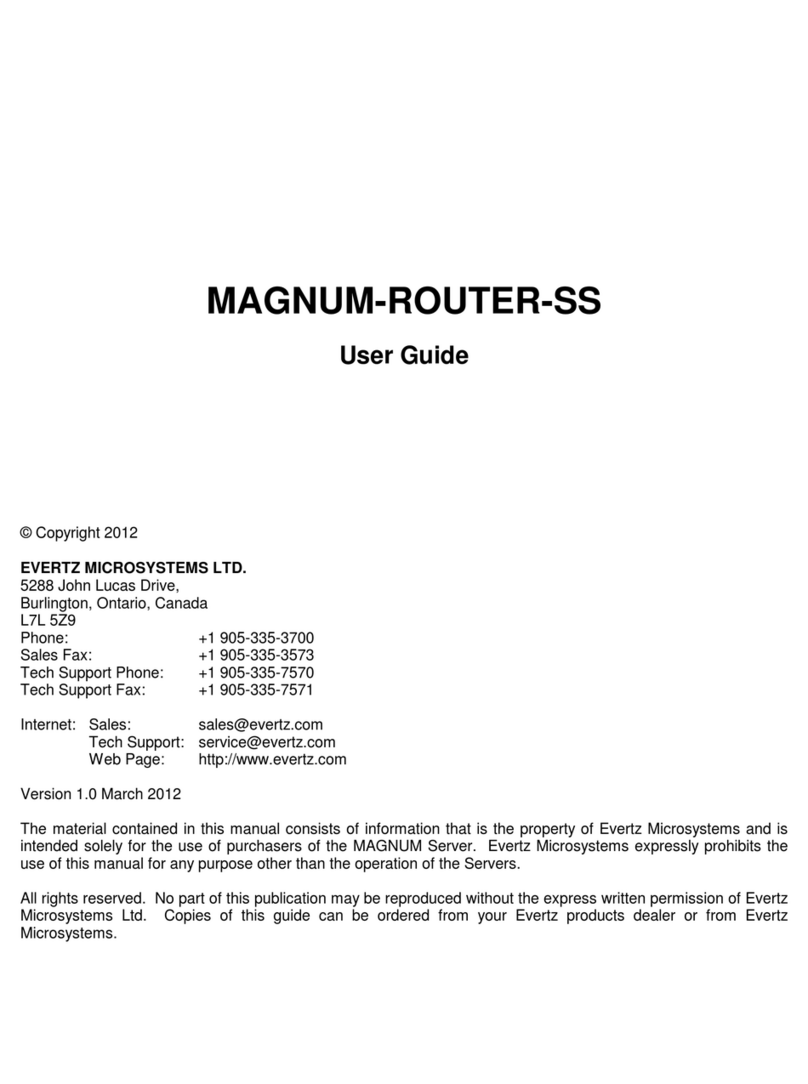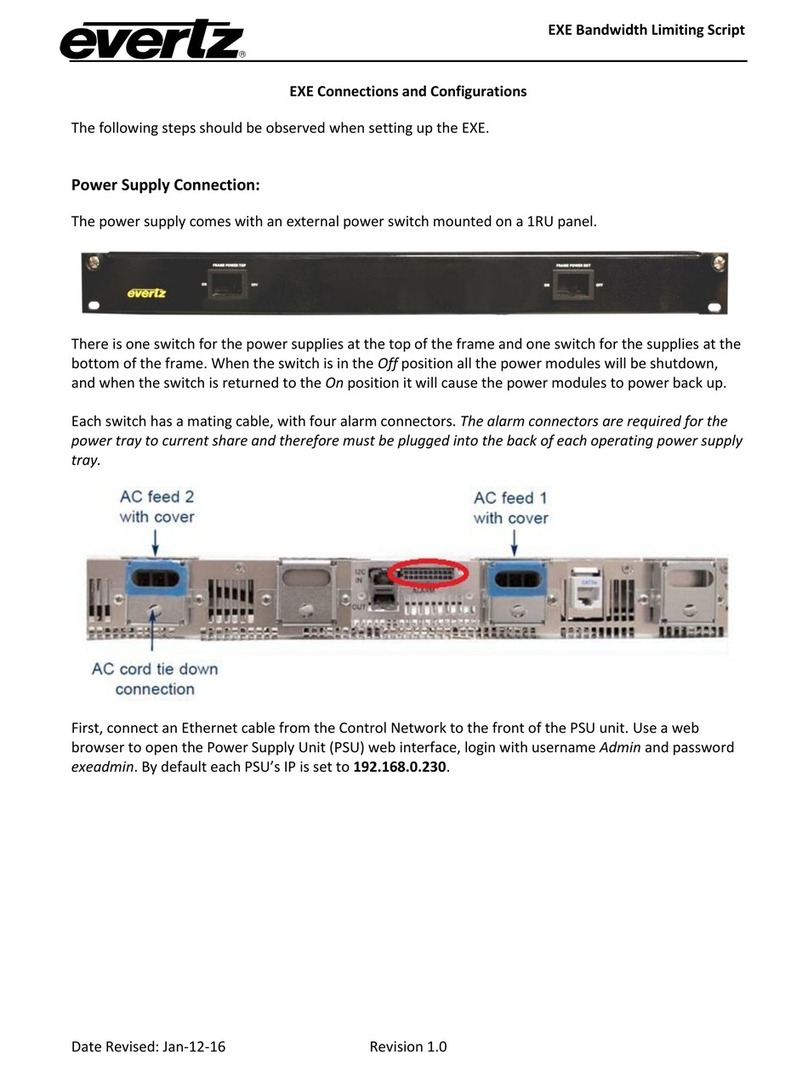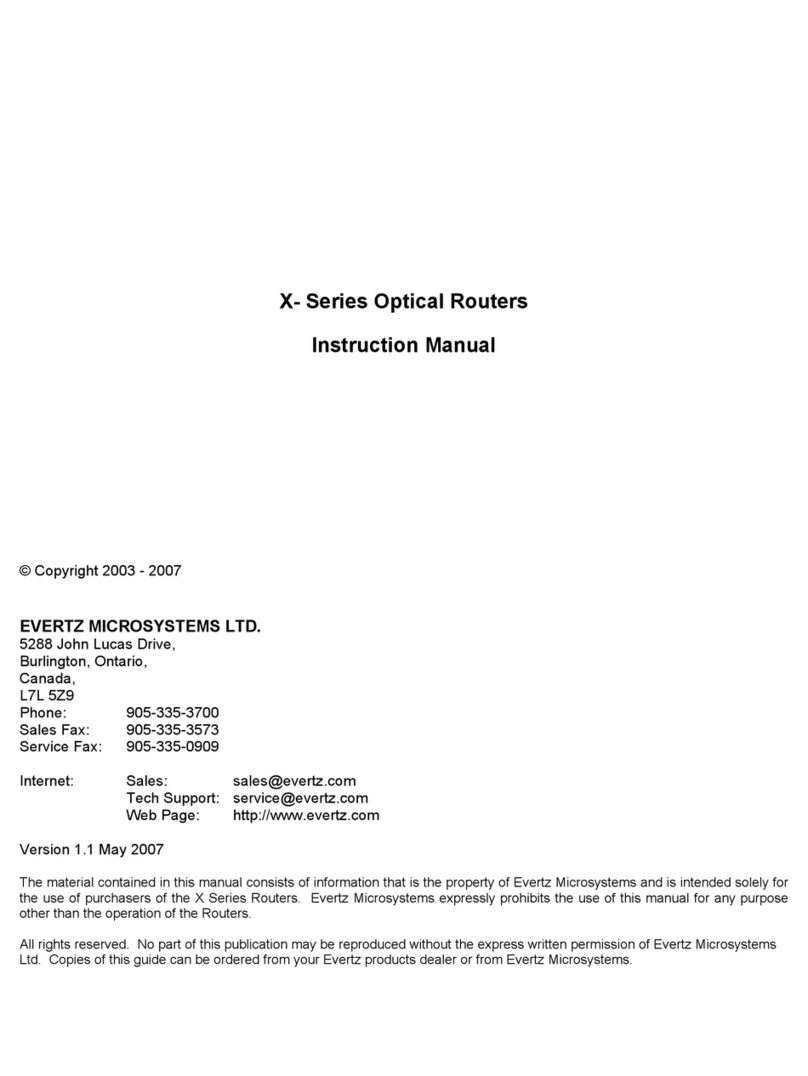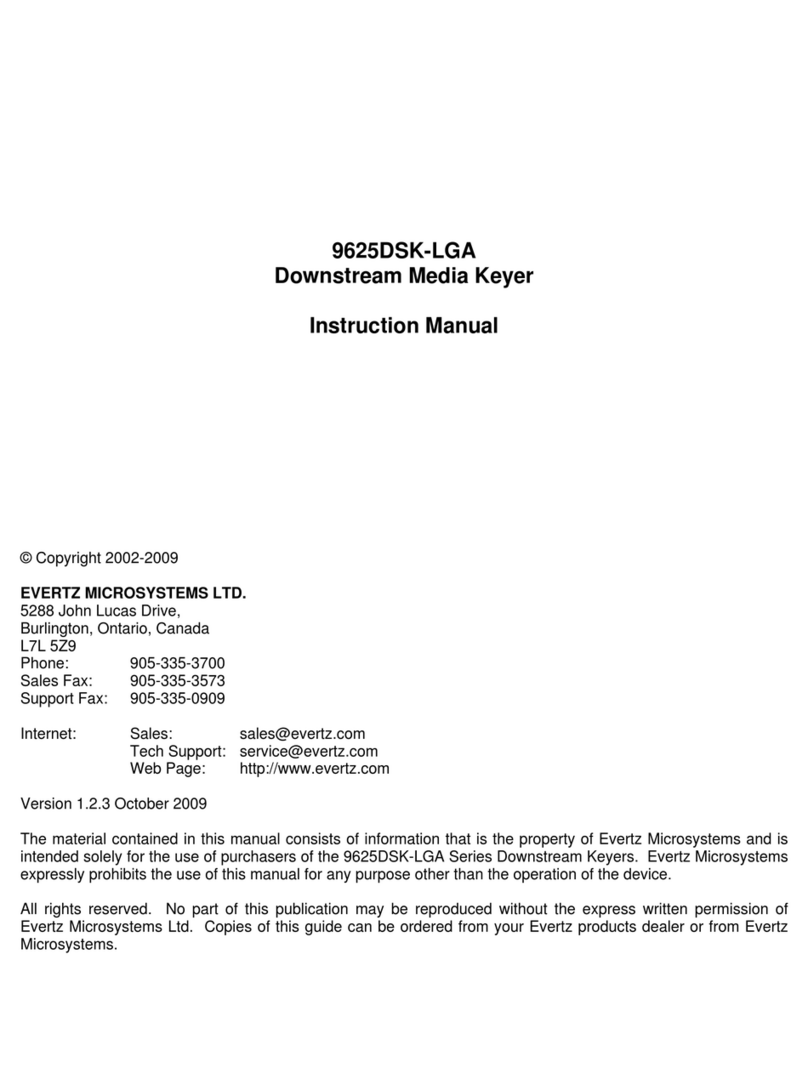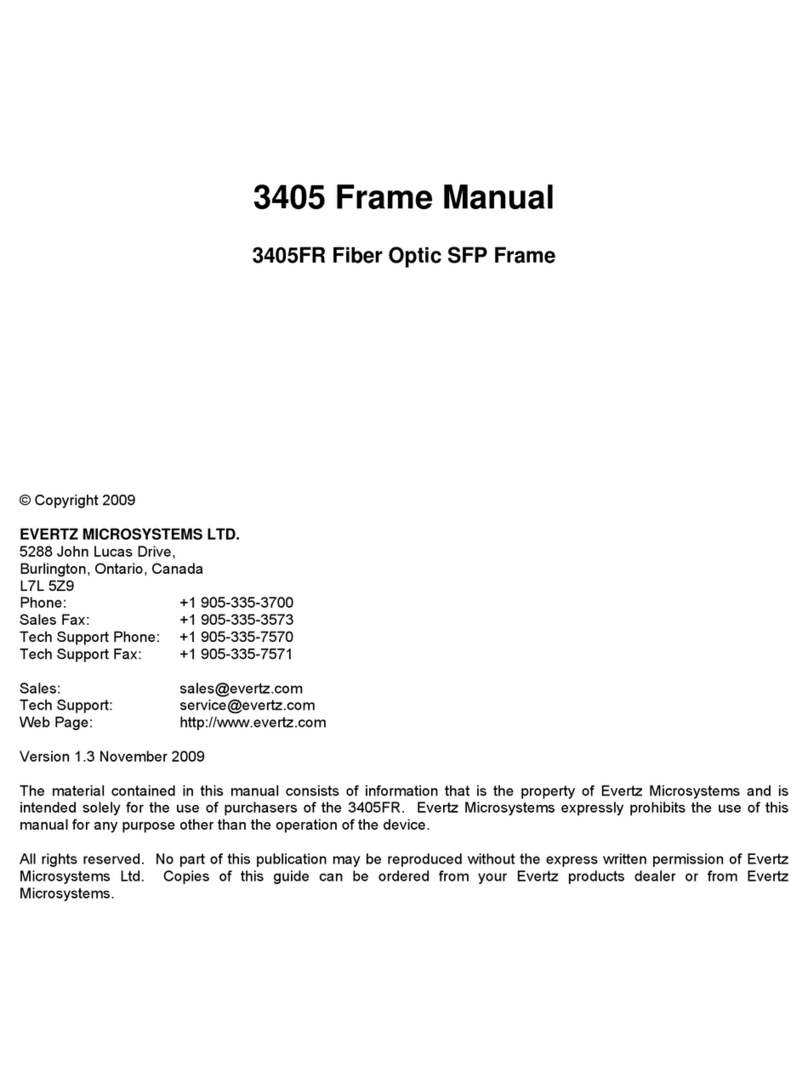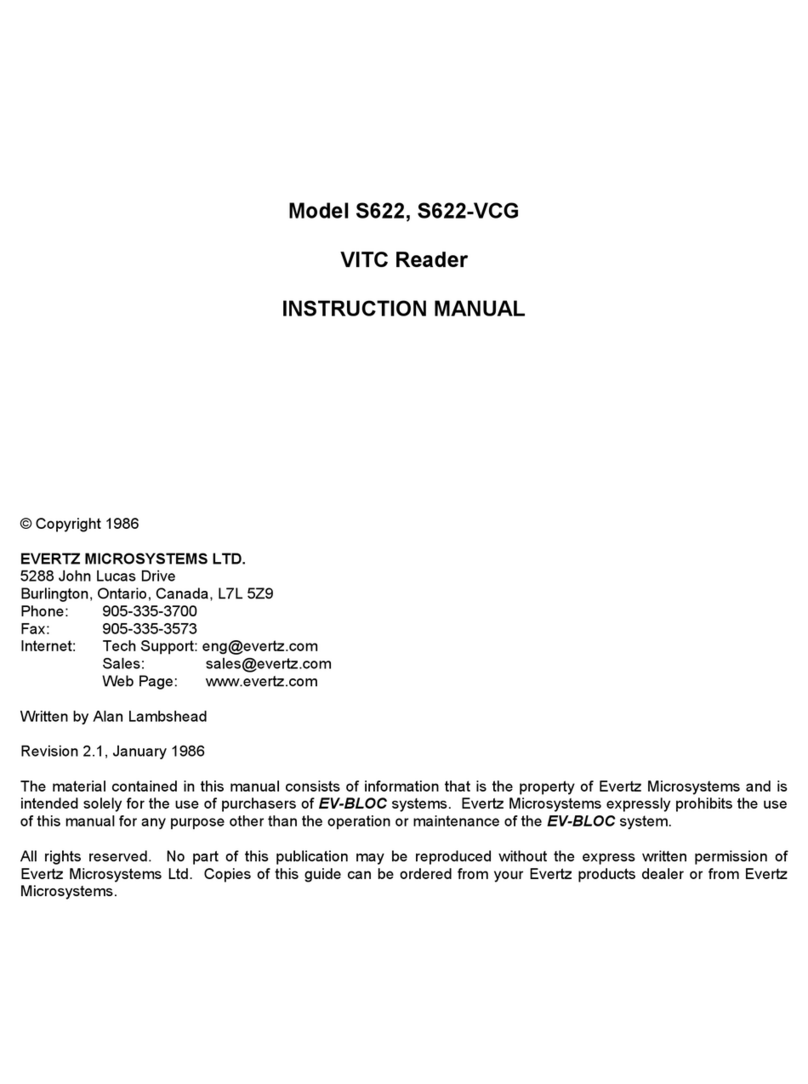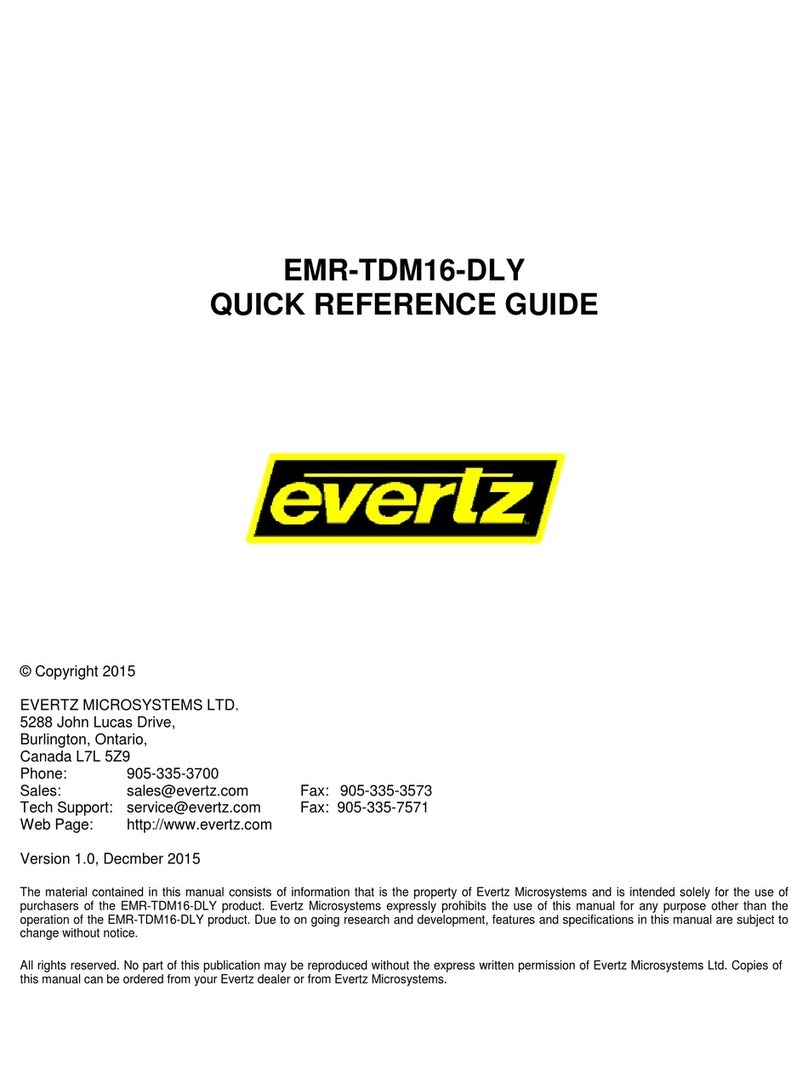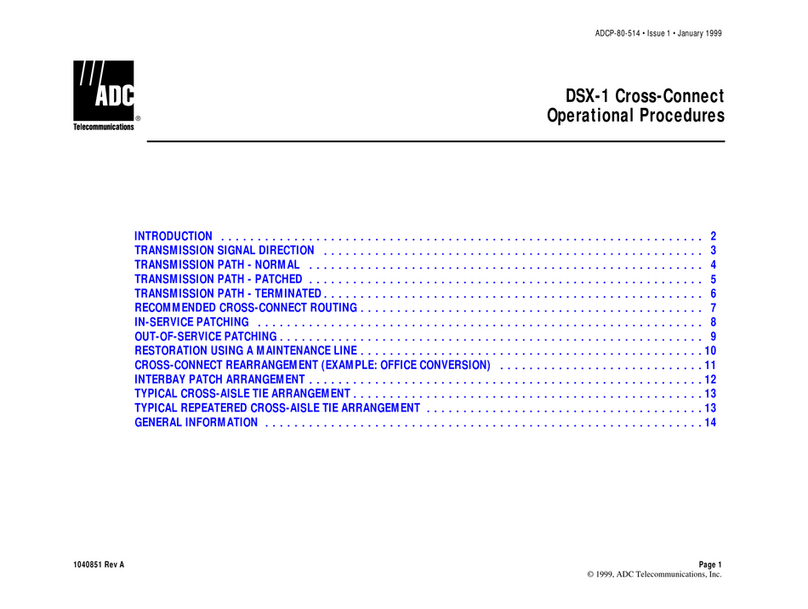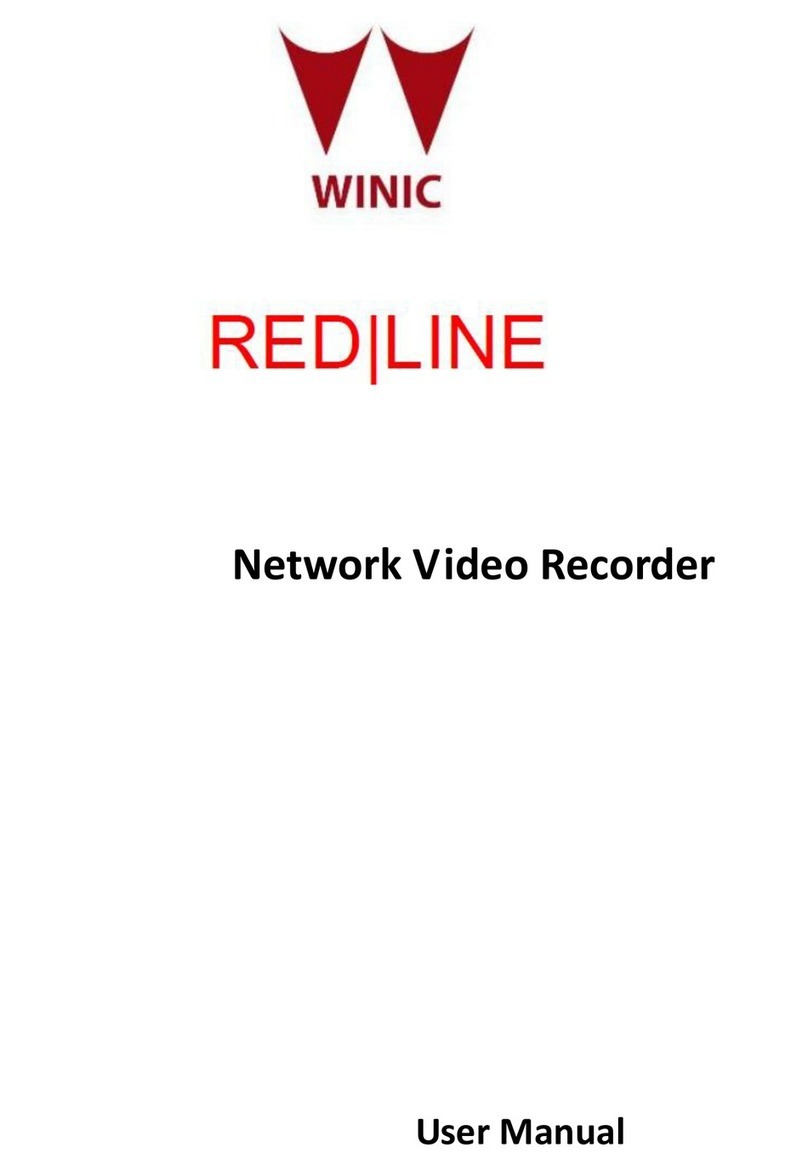
5700MSC-IP
IP Network Grand Master Clock & Video Master Clock System
Page - ii Revision 0.2
3.2.5. Video Genlock Operation.........................................................................................28
3.2.6. Serial Digital Video Timing.......................................................................................28
3.2.7. NTSC Genlock Operation........................................................................................29
3.2.8. NTSC Genlock with Ten-field Reference .................................................................31
3.2.9. PAL Video Genlock Operation.................................................................................33
3.2.10. HD Tri-Level Genlock ..............................................................................................35
3.2.11. Slo-PAL Genlock .....................................................................................................36
3.2.12. Continuous Wave and Internal References..............................................................37
3.2.13. GNSS Frequency Reference...................................................................................39
3.3. TIMEKEEPING ...................................................................................................................40
3.3.1. Time Lock Types .....................................................................................................41
3.3.2. Coordinated Universal Time (UTC)..........................................................................42
3.3.3. Time Reference Sources.........................................................................................42
3.3.4. LTC and VITC Timecode.........................................................................................45
3.3.5. IRIG Timecode ........................................................................................................50
3.4. NETWORK TIME PROTOCOL (NTP).................................................................................51
3.5. GLOBAL NAVIGATION SATELLITE SYSTEM..................................................................52
3.5.1. Overview .................................................................................................................52
3.5.2. GNSS Lock Operation.............................................................................................53
3.5.3. GNSS Re-Lock in Slow Mode..................................................................................54
3.5.4. GNSS Position Insertion into Timecode...................................................................54
3.6. AUTOMATIC CHANGEOVER OPERATION ......................................................................55
4. INSTALLATION ..........................................................................................................................57
4.1. REAR PANEL.....................................................................................................................57
4.1.1. Reference Loop Connections ..................................................................................57
4.1.2. Sync Outputs...........................................................................................................57
4.1.3. Ethernet Connections..............................................................................................58
4.1.4. Serial Port Connection.............................................................................................59
4.1.5. GNSS Connection ...................................................................................................59
4.1.6. AUX Connections (available with 5700MSC-IP+AUX option)..................................60
4.1.7. GPIO, LTC Input, Secondary LTC Outputs..............................................................60
4.1.8. Unbalanced Audio Connections AES 1, 2 and 3 (available with 5700MSC-IP+AUX
option) .....................................................................................................................60
4.1.9. DARS OUT (available with 5700MSC-IP+AUX option) ............................................61
4.1.10. Balanced Audio Connections (available with 5700MSC-IP+AUX option) .................61
4.1.11. Test Generator Connections (SDTG, HDTG, 3GTG options)...................................61
4.1.12. Power Connections..................................................................................................61
4.1.13. M4 Grounding Stud..................................................................................................62
4.2. MOUNTING AND COOLING ..............................................................................................62
4.3. CONNECTING THE GENERAL PURPOSE INPUTS AND OUTPUTS...............................62
4.4. CONNECTING TWO 5700MSC-IP UNITS IN SYNCRO MODE..........................................63
4.5. GNSS RECEIVER INSTALLATION....................................................................................63
4.5.1. Mounting the GNSS Smart Antenna ........................................................................63
4.5.2. Connecting the GNSS Smart Antenna to the 5700MSC-IP......................................65
4.5.3. System Start-Up ......................................................................................................66
